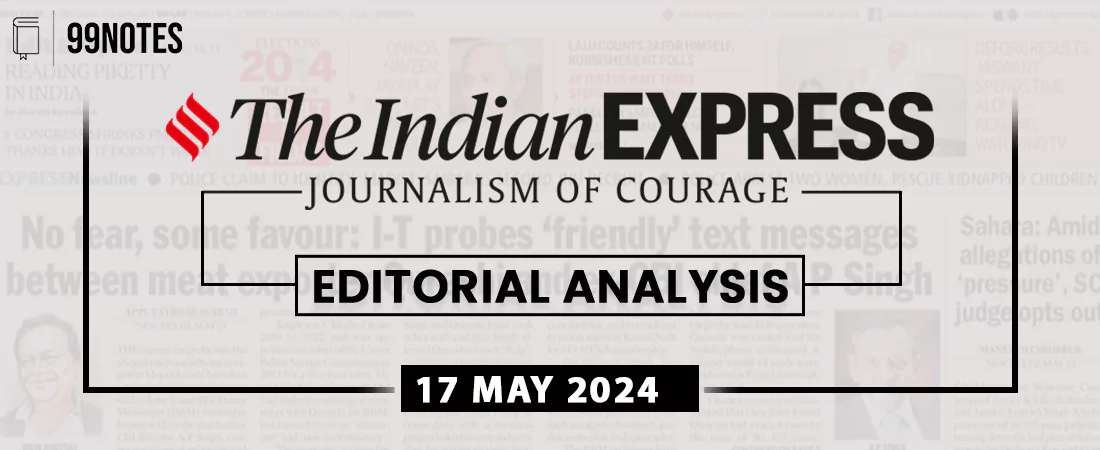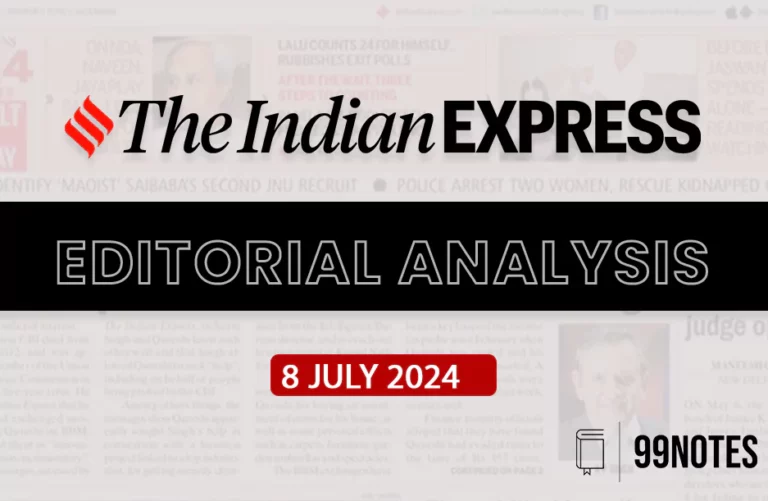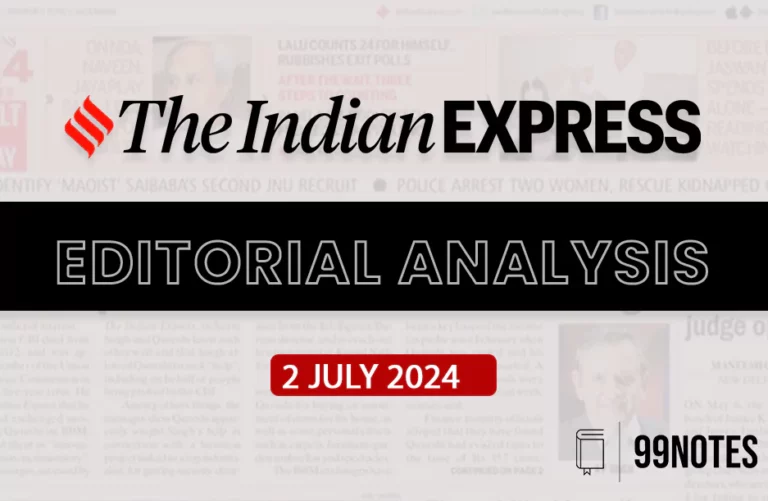17 May 2024 : Indian Express Editorial Analysis
1. A right to fairness
| Topic: GS2 – Polity – Indian constitution – Significant provisions |
| Context: |
|
Historical and Legal Background of Due Process:
- The concept of due process dates back to the Magna Carta (1215), which emphasized procedural rights, though initially for nobles.
- The term “due process” appeared later in British law under King Edward III and was significantly incorporated into the American Constitution’s Fifth and Fourteenth Amendments, which ensured that life, liberty, and property could not be deprived without due process of law.
- In India, the history of due process is complex and fraught with setbacks. Initially embraced by the framers of the Indian Constitution, the due process clause was ultimately diluted and replaced with “procedure established by law” under the influence of constitutional advisor B.N. Rau.
Evolution of Due Process in Indian Jurisprudence:
- Despite its initial omission from the Indian Constitution, due process gradually gained judicial recognition.
- The Supreme Court’s early judgments, such as in A.K. Gopalan (1950), adhered to a literal interpretation of “procedure established by law,” often at the expense of fundamental rights.
- However, the landmark Maneka Gandhi case (1978) marked a significant shift, with Justice Fazal Ali’s dissent advocating for due process becoming the majority opinion.
- This expanded the scope of Article 21, requiring laws to be reasonable, fair, and just.
- The 44th Amendment (1978) further entrenched the right to life and personal liberty as non-derogable rights, even during emergencies.
Contemporary Relevance and Preventive Detention:
- Despite these advancements, India’s legal landscape still grapples with stringent preventive detention laws, a colonial legacy prone to abuse.
- The Supreme Court, in the Pramod Singla case (2023), criticized these laws, stressing the importance of rigidly adhering to procedural safeguards.
- However, preventive detention remains prevalent, with over 12,000 people detained under such laws in 2021 and 76% of prison inmates being under trial in 2022, as per the National Crime Records Bureau (NCRB).
- The unimplemented part of the 44th Amendment regarding preventive detention continues to highlight the tension between legislative power and fundamental rights.
Conclusion:
- The Supreme Court’s recent judgment in Purkayastha’s case serves as a reminder of the judiciary’s role in protecting individual rights against arbitrary state power.
- By delineating between the general “reasons of arrest” and the specific “grounds of arrest,” the Court reinforced the substantive aspect of due process.
- This ensures that the procedural requirements are not just formalities but are vital protections against state overreach.
- The ongoing challenges with preventive detention laws underscore the need for continued vigilance and judicial activism to safeguard democratic principles and human rights in India.
| What is Preventive Detention? |
Background:
About:
Grounds for Preventive Detention:
Two Types of Detentions:
Protection:
Safeguards Available to the Detained Person:
|
| PYQ: Consider the following statements: (2023)
1. According to the Constitution of India, the Central Government has a duty to protect States from internal disturbances. 2. The Constitution of India exempts the States from providing legal counsel to person being held for preventive detention 3. According to the Prevention of Terrorism Act, 2002, confession of the accused before the police cannot be used as evidence. How many of the above statements are correct? (a) Only one (b) Only two (c) All three (d) None Answer: (a) |
| Practice Question: Discuss the evolution of the concept of “due process of law” in Indian jurisprudence. How has the Supreme Court’s interpretation of this concept impacted the protection of fundamental rights in India? Provide relevant case laws to support your answer. (250 words/15 m) |



